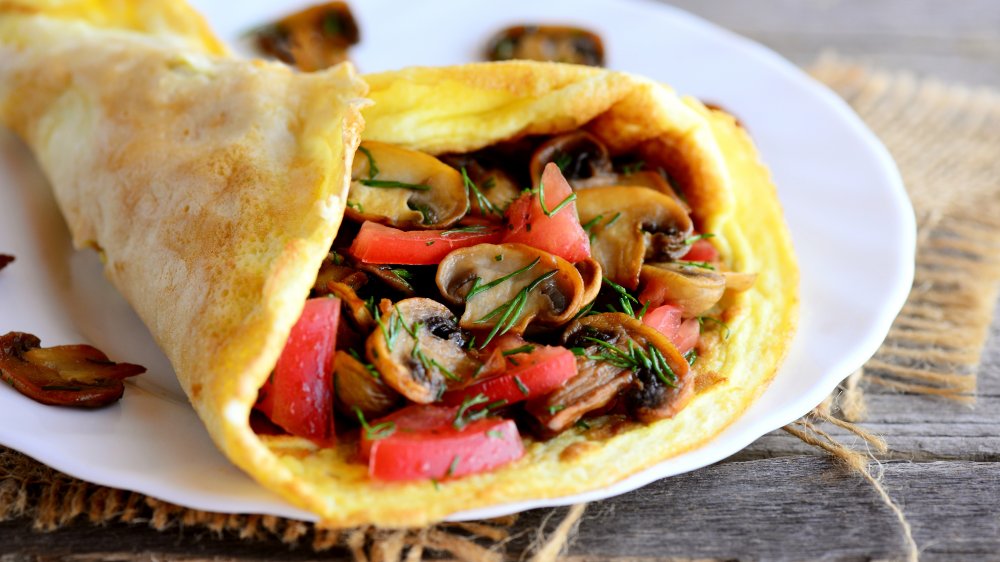Fillings You Should Never Put Into An Omelet
Making a light and fluffy omelet is a delicious way to start the day, but there are several big mistakes you can make if you're not careful. It's quite easy to ruin your omelet if you do not follow some guidelines that have been thoroughly tested, according to Bon Appetit. For example, you don't want to use more than two to three eggs for a single-serving omelet. You also shouldn't use anything larger than an 8-inch pan. Otherwise, the eggs will cook too thin and the filling can break through.
Speaking of fillings, one big mistake people make with their omelets is that they choose ingredients that are best left in the fridge. One such ingredient is quinoa, as this addition, while healthy, can add too much crunch.
Apples can become too soggy, and if the peel is left on, they can also make the dish hard to chew. Similarly, mushrooms need to be thoroughly cooked to get rid of all the excess water. If not, you'll have liquid spilling out the ends.
Hummus also is likely too liquidy for this egg dish. As far as potatoes go, they are better left on the side as a hash. Otherwise, they might be undercooked or cause the omelet to be too chewy (via Cheat Sheet).
Other omelet fillings you shouldn't use
The list of omelet fillings you probably never thought to use — but most likely shouldn't use — could go on much longer. One category of fillings that just doesn't work well is sauces or condiments. Things like sour cream, kimchi, stewed okra, or chili are just too wet to use as an omelet filling. These wet ingredients just make the omelet soggy, and with too many moist fillings, the eggs could break apart due to the high level of water content. Ingredients like pesto or hot sauce might make good toppings, but should be used quite sparingly inside an omelet to help keep it intact — or better yet, just relegate them to the top of your omelet once it's cooked (via Eating Well).
Even some of the most basic fillings like bacon, ham, vegetables, or cheese should be left out of an omelet from time to time. While these are classic fillings that tons of people love, making a good omelet is all about balance. You should typically stick to one to two featured fillings. If the dish becomes over-filled with ingredients spilling out, then the omelet could break or just be too much in one dish (via Serious Eats).
So, the next time you want to experiment with your breakfast, consider the implications of the fillings as they cook. Remember that sometimes less is more, and definitely avoid fillings that are too wet, provide an unpleasant texture, or just don't work well.

